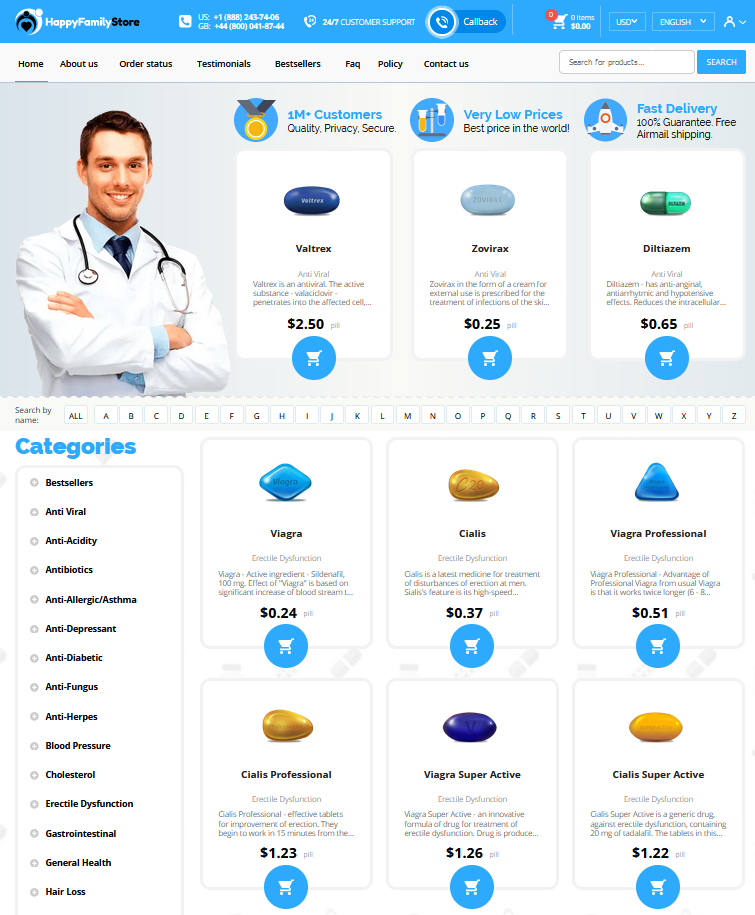To Buy Amoxicillin Online Visit Our Pharmacy ↓
 Amoxicillin Vs. Other Antibiotics: Know the Differences
Amoxicillin Vs. Other Antibiotics: Know the Differences
Overview of Amoxicillin and Its Main Uses
Amoxicillin, a widely used antibiotic, belongs to the penicillin group of medications. It is renowned for its ability to combat a variety of bacterial infections, making it a staple in medical prescriptions. Amoxicillin primarily combats Ear Infections, Strep Throat, Pneumonia, and certain skin infections and urinary tract infections. This antibiotic works by halting the growth of bacteria, effectively treating and preventing the spread of infections caused by susceptible organisms.
| Condition | Usage Frequency |
|---|---|
| Ear Infections | High |
| Strep Throat | Medium |
| Pneumonia | Medium |
Prescribed for adults and children, its versatility allows it to thrive as a frontline treatment option. Its effectiveness and relatively mild side effect profile make it a favorite among healthcare professionals and patients alike.
Comparing Amoxicillin with Penicillin and Other Variants

Amoxicillin and penicillin, though closely related, differ in their spectrum of effectiveness. Amoxicillin boasts a broader range, tackling both gram-positive and some gram-negative bacteria, expanding its usability in combating infections. In contrast, penicillin is typically more effective against gram-positive organisms. This distinction stems from amoxicillin’s modified structure, which enhances its ability to penetrate bacterial cell walls.
Other antibiotic variants, such as cephalosporins and macrolides, offer their unique properties and efficacy. Cephalosporins, for instance, are favored for treating respiratory and urinary tract infections, thanks to their expansive coverage. Macrolides are notable for their use in patients allergic to penicillin-based antibiotics, as they target similar bacterial strains but through a different mechanism, offering a safe alternative.
Side Effects: Amoxicillin Versus Other Common Antibiotics
When it comes to antibiotics, amoxicillin is often favored for its broad-spectrum activity and generally mild side effects. Unlike some other antibiotics that may provoke severe reactions, amoxicillin is generally well-tolerated, with nausea, diarrhea, and skin rash being the most common issues noted.
In contrast, antibiotics like erythromycin and tetracycline can trigger more pronounced digestive disturbances and, in some cases, photosensitivity, causing skin reactions upon exposure to sunlight. Macrolides, another antibiotic class, are known for gastrointestinal upsets, which some people find intolerable.
Quinolones, while effective, can have serious side effects such as tendon damage and nerve issues. Amoxicillin, with its relatively mild side effect profile, is frequently preferred for treating infections in children and those with sensitive medical conditions. Its safety and efficacy continue to support its widespread use in diverse medical scenarios.
Effectiveness Against Different Types of Infections

Amoxicillin, a member of the penicillin family, stands as a first-line treatment for a variety of infections due to its broad-spectrum activity. It shines bright against bacterial foes like Streptococcus pneumoniae, responsible for respiratory infections, and Haemophilus influenzae, often implicated in ear infections. Its efficacy extends to certain urinary tract infections, thanks to its ability to combat Escherichia coli. In situations where traditional penicillin might falter, amoxicillin frequently steps in as the more potent alternative.
On the other hand, antibiotics like azithromycin and ciprofloxacin offer their own strengths against different pathogens. Azithromycin might be preferred for patients needing an option with a longer half-life or for those allergic to penicillins. Meanwhile, ciprofloxacin targets more complex cases, like those involving certain gastrointestinal or severe urinary tract infections. Understanding these distinctions can help in choosing the most effective antibiotic for specific infections.
Resistance Concerns: Amoxicillin and Global Trends
Amoxicillin, a widely used antibiotic, faces mounting challenges due to the rapid rise of antibiotic resistance. Globally, bacteria have increasingly developed mechanisms to evade the effects of amoxicillin, raising concerns in the medical community. Nations across the world are witnessing a surge in resistance rates, compelling healthcare professionals to rethink prescription habits and explore combination therapies to maintain its efficacy.
The role of amoxicillin in combating bacterial infections is pivotal, yet its effectiveness is sometimes compromised by resistance. Regions with high antibiotic misuse report escalated levels of resistance, prompting urgent calls for better stewardship. Educational campaigns and stricter regulations are being advocated to mitigate the risk of resistance.
| Region | Resistance Levels |
|---|---|
| North America | Moderate |
| Europe | High |
| Asia | Very High |
These initiatives strive to preserve the effectiveness of antibiotics like amoxicillin, ensuring they remain viable options in the fight against infectious diseases.
Amoxicillin Dosage Guidelines Compared to Alternatives
Delving into antibiotic dosage guidelines reveals that while amoxicillin is often prescribed based on weight and age, it's generally flexible, making it suitable for various infections. Alternatives like azithromycin, however, might be dosed differently, requiring a shorter course but typically at higher doses. This distinction highlights amoxicillin's role as a versatile and widely-used antibiotic, especially for infections in children, where precise dosing by weight is essential. Yet, understanding these variations is crucial for effective treatment, avoiding resistance, and minimizing side effects. For a deeper dive into amoxicillin's application and variations, explore the following resources: NCBI and Drugs.com.
orderedad

